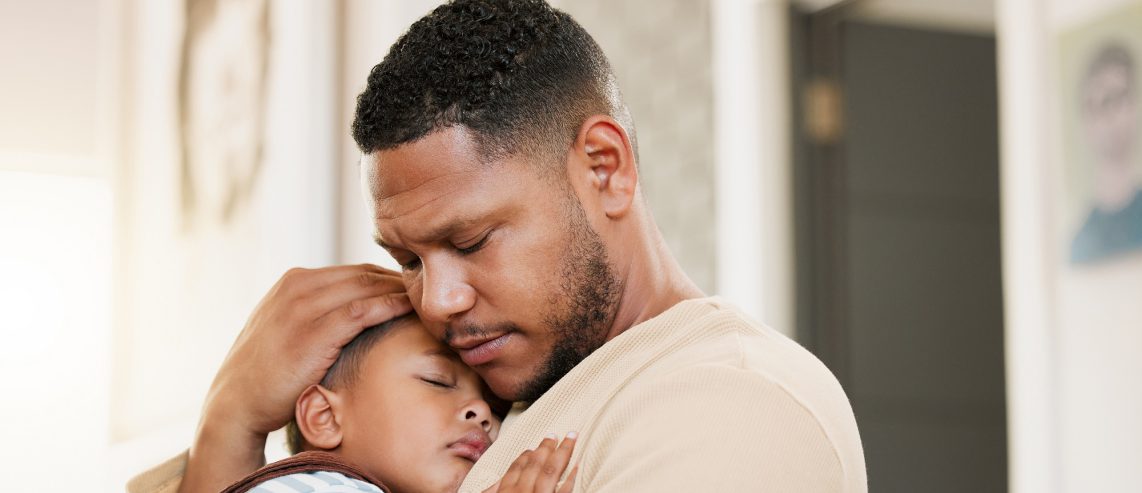Fainting — also known as syncope — is a relatively common situation in children. It can happen for many reasons. It rarely indicates something serious, but it’s also important to know the signs and what to do when it happens.
What Causes Fainting?
Many of us have felt a little dizzy or lightheaded after standing up too quickly. This is because, throughout the day, gravity is trying to pull the blood down to our legs and away from our brains. Our body counteracts this by tightening the blood vessels to keep the blood circulating to the upper portion of the body.
But when we stand too quickly or for too long, our body may not react properly to maintain that blood flow. When this happens, our brain reacts by triggering a nerve called the vagus nerve.
Triggering the vagus nerve can result in loss of consciousness and fainting through a sudden decrease in heart rate and blood pressure.
This type of fainting almost always happens when you are in a sitting or standing position. Another term for it is syncope — a brief and sudden loss of consciousness followed by a spontaneous recovery. Vasovagal syncope is fainting that occurs with the triggering of the vagus nerve.
One way to think about this fainting reflex is as a defense mechanism. It’s the brain’s way of getting the body flat and resolving the issue of gravity pulling blood away from it.
Occasionally, other triggers can activate the vagus nerve. Fear, pain, urination, or even a viral infection can trigger the nerve and lead to fainting.
Never Miss a Beat!
Subscribe to Our HealthBeat Newsletter!
Thank you for subscribing!
You can now select the specific newsletters you'd like to receive.
You are already subscribed.
Subscribe to more newsletters in our email preference center.
Sorry, an error occurred. Please try again later.
Get Healthy Tips Sent to Your Phone!
Recognizing Symptoms Before You Faint
You may experience certain symptoms before you faint, including:
- Blurred vision.
- Dizziness or lightheadedness.
- Nausea.
- Sweaty palms.
- Turning pale.
- Warmth.
However, not everyone notices symptoms before they faint.
People can have reflex syncope if they:
- Have stress from fear or pain — for example, if they’ve suffered an injury or need blood taken for tests.
- Have unusual reactions to urinating, coughing, or other body functions.
- Stand for too long, are too tired, or become overheated.
What to Do if You Feel Lightheaded
If you feel lightheaded or faint, lie down flat with your feet up for 10 minutes. Lying down at the first sign of these symptoms can often prevent fainting.
When a person does faint, lying down restores blood flow to the brain. Consciousness should return fairly quickly. When the dizziness has passed, they can slowly stand up again.
To treat a child who has fainted:
- Make them lie flat and elevate their feet for 10 minutes.
- Give them a large glass of water to increase blood volume.
- Give them fruit juice to raise blood sugar.
After fainting, you might not feel normal for a little while. You might feel depressed or fatigued for a short time. Some people even feel nauseous and may vomit.
How to Treat Vasovagal Syncope
Watch for the warning signs of vasovagal syncope, like dizziness, nausea, or sweaty palms. If you have a history of vasovagal syncope and think you are about to faint, lie down right away.
If you have had episodes of vasovagal syncope, some suggestions on how to help prevent fainting include:
- Avoiding triggers, such as standing for a long time or the sight of blood.
- Discontinuing medicines that lower blood pressure.
- Drinking plenty of fluids to maintain blood volume.
- Eating a higher-salt diet to help keep up blood volume.
- Getting moderate exercise.
- Performing counter-pressure maneuvers.
- Wearing compression stockings.
Counter-pressure maneuvers can include tensing your arms with clenched fists, leg pumping, and leg-crossing. These can stop a vasovagal syncopal episode or at least delay it enough for you to lie down with your feet elevated.
Additional counter-pressure maneuvers include:
- Arm tensing, which involves gripping one hand with the other while moving both arms away from the body.
- Hand gripping, which involves gripping a rubber ball or similar object as hard as possible.
- Wearing elastic compression stockings on the feet and lower legs.
“Two key measures to reduce dizziness and fainting are increasing fluid and salt intake and regular exercise.” That’s according to Shaji Menon, MD, pediatric cardiologist, UPMC Heart and Vascular Institute.
Drinking extra water with electrolytes and salt along with eating salty foods is key if you tend to faint. Drink extra fluids every day. About 8 cups (2 liters) per day is a reasonable goal.
You may need to drink even more if you play sports or go out in hot weather. Drink fluids with electrolytes and salt. Avoid drinks containing caffeine.
Add some salty foods to your diet in moderation, as well. Too little salt in the diet can cause low blood pressure.
Regular exercise and improving cardiovascular conditioning are critical to handling sudden blood pressure and heart rate changes.
Occasionally, you may need medication to help control vasovagal syncope. However, research on these medicines has revealed uncertain benefits. A person usually only considers them when they have multiple episodes of fainting unresponsive to the above measures.
Some of the medicines that your doctor may prescribe include:
- Alpha-1-adrenergic agonists to increase blood pressure.
- Corticosteroids to help increase the sodium and fluid levels.
What Are Possible Complications of Vasovagal Syncope?
Vasovagal syncope itself is generally not dangerous. Of course, fainting is dangerous if it happens at certain times, like while driving. However, most people with rare episodes of vasovagal syncope can drive safely.
If you have chronic syncope that is not under control, you may want to avoid driving. This is especially likely if you don’t usually notice any warning signs before you faint.
When Should I Call My Health Care Provider?
Pediatric syncope is common, with about 15% of children experiencing an episode before the end of adolescence. In most cases, fainting isn’t a sign of a dangerous medical condition.
Although fainting in adolescents is somewhat common, don’t ignore it. Contact your provider right away if your child:
- Has a family history of cardiac defect, cardiomyopathy, rhythm disorders, or sudden death before the age of 50.
- Has recurring episodes of passing out.
- Is still feeling faint or dizzy after 15 minutes.
- Passes out again on the same day.
- Passes out after a loud noise or swimming triggers them.
- Passes out during exercise.
You can also contact your child’s health care provider if they pass out and you think they should see them.
About UPMC
Headquartered in Pittsburgh, UPMC is a world-renowned health care provider and insurer. We operate 40 hospitals and 800 doctors’ offices and outpatient centers, with locations throughout Pennsylvania, Maryland, New York, West Virginia, and internationally. We employ 4,900 physicians, and we are leaders in clinical care, groundbreaking research, and treatment breakthroughs. U.S. News & World Report consistently ranks UPMC Presbyterian Shadyside as one of the nation’s best hospitals in many specialties and ranks UPMC Children’s Hospital of Pittsburgh on its Honor Roll of America’s Best Children’s Hospitals. We are dedicated to providing Life Changing Medicine to our communities.

